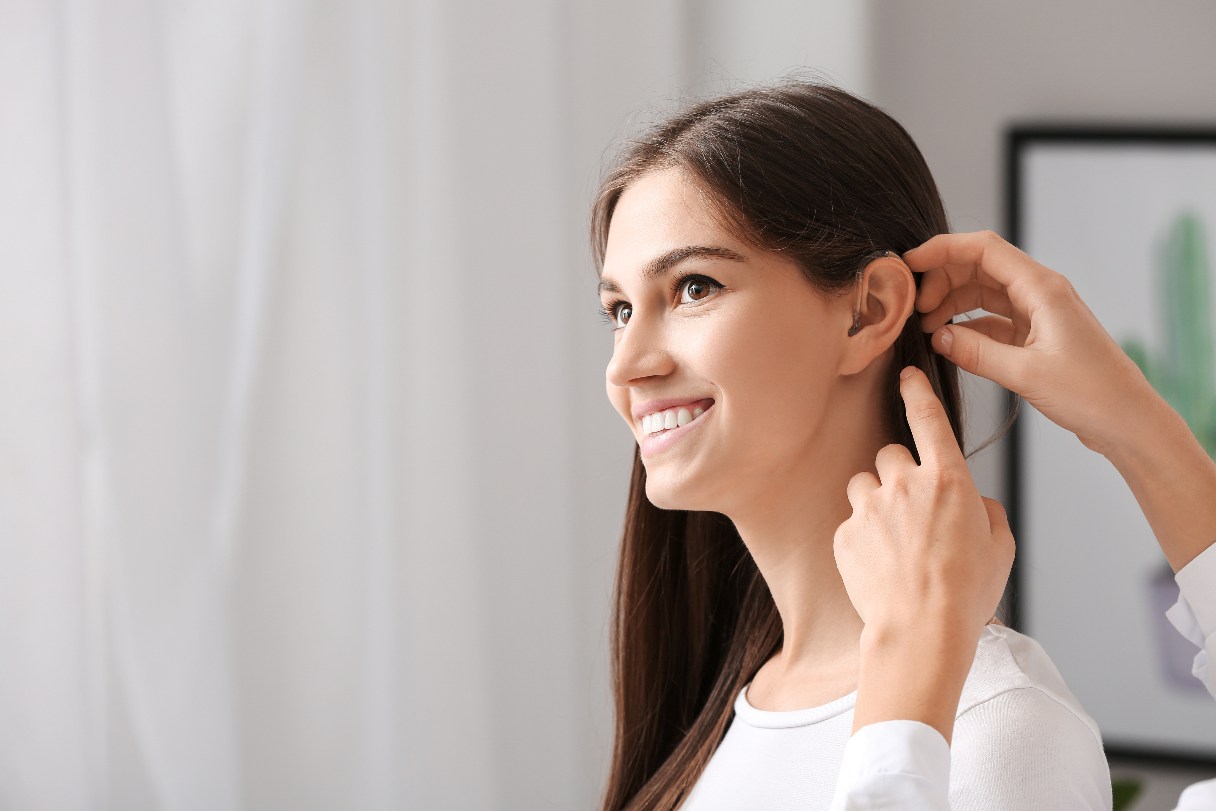Hear All Year: 10 Awareness Events to Promote Hearing Health Each Year
Every day marks an opportunity for hearing loss awareness and patient education. We’ve made a list of special monthly events and resources — from local to worldwide — to help you plan and inspire new ideas to “hear all year."
By Michelle Seitzer
Digital Writer
Posted Apr 11, 2025 - 5 min read

Every day marks an opportunity for hearing loss awareness and patient education. But every day is also busy with the work of patient care: Billing, scheduling and service provision won’t do themselves.
That’s why we’ve created this guide of practical tips and resources to help you seamlessly integrate hearing health awareness and education into your outreach efforts — within your office and beyond.
Tinnitus Awareness Week (February 3 to 9)
The American Tinnitus Association (ATA) offers educational services and resources during Tinnitus Awareness Week and throughout the year. Direct patients who are interested in digging deeper into all things tinnitus to the ATA library, where they’ll find numerous webinars by leading experts in the field.
One easy way to do this? Include a link to the library in your patient or prospect e-newsletter and on your social networks.
International Cochlear Implant Awareness Day (February 25)
International Cochlear Implant Awareness Day is an initiative launched by the American Cochlear Implant (ACI) Alliance.1
As you know, not all individuals with moderate to severe hearing loss are using cochlear implants, so driving awareness of them is critical. In fact, one study notes that only 2% of the people who could benefit from having a cochlear implant actually have one.2
Visit the ACI Alliance's Hearing Health Portal, designed with hearing health professionals in mind, for other stats and content you can use in your marketing.
World Hearing Day (March 3)
Spearheaded by the World Health Organization (WHO), this international campaign is intended to empower individuals to drive change for themselves and those around them so better ear health and care is a reality for everyone.3
Key messages include education around present audiology care to prevent future damage, safe listening practices and an emphasis on the 1 billion+ young people who face the risk of permanent hearing loss due to the lack of protection while gaming or listening to music.3 This messaging focused on young adults and prevention is vital, as 1 in 6 consumers believe hearing loss only affects older adults.4
International Noise Awareness Day (April 30)
Established in 1996 by the Center for Hearing and Communication, this day is dedicated to educating people about the impact of noise on the quality of life, hearing and health.5 Each person’s hearing and sensitivities are unique; what seems like noise to some may not bother others (and vice versa).
Take advantage of this educational opportunity to discuss your patients’ comfort levels with different types of noise, and suggest ways to mitigate the damage (or even distress) these noises may cause. View downloadable social media materials with recommended hashtags, access general facts and talking points and get inspiration for community events at the International Noise Awareness Day website, which is powered by the Center for Hearing and Communication.
National Speech-Language-Hearing Month (May)
National Speech-Language-Hearing Month — formerly known as Better Hearing and Speech Month — takes place in May and is your time to shine as a hearing care provider. Communication is essential to human connections, making the link between speech and hearing vital. Use this opportunity to highlight how better hearing enhances speech and overall communication. While this connection is clear to specialists, many in the general public may not realize it.
Consider the caregivers and parents who can benefit from resources to support individuals with hearing loss. Communication is a two-way street, and hearing health relies on collaborative partnerships among patients, providers and caregivers. Stay tuned to the American Speech-Language-Hearing Association (ASHA) website for helpful resources.
Deaf Awareness Week (May 5 to 11)
As hearing health professionals, you regularly interact with patients who already live with hearing loss. Seek out opportunities to engage prospective patients in the deaf community who may benefit from your audiology services as well. Check out the National Deaf Center’s resource hub for ideas on reaching this audience.
You may want to consider launching a social media campaign that builds up to Deaf Awareness Month, which takes place in September. During that month, reach out to your social media audience and invite them to share stories and experiences of living with hearing loss or ways they protect their ears from damage in daily life.
Independence Day (July 4)
Make hearing loss prevention a priority educational point in July, when the potential for noise damage incurred by fireworks is at an all-time high.6 To attract potential patients, hand out branded hearing protection at local community events.
National Ear Health Day (September 19)
Being proactive about hearing loss isn’t a priority for most people. According to the Synchrony Hearing Health and Loss Prevention Study, only 10% of consumers visited an audiologist or other hearing health professional in the past year.4
Take the opportunity on National Ear Health Day to remind patients and caregivers that a regular yearly visit to the audiologist should be prioritized as part of their overall wellness plan, just like seeing the dentist or eye doctor.
According to the study, 43% of people said they would get their hearing checked if it was free.4 Educating patients, prospects and caregivers about costs and financing options may be the key to getting that first appointment scheduled — and to staying on their calendar each year.
Balance Awareness Week (September 14 to 20)
Balance Awareness Week provides a great patient education opportunity for hearing health that isn’t just about what you can or cannot hear. The connections between balance, dizziness and hearing are not often clear to the general public and sometimes even to those who are new to navigating life with hearing loss.
Focus some of your audiology digital marketing efforts this fall on the resources provided by the Vestibular Disorders Association (VeDA).
National Protect Your Hearing Month / National Audiology Awareness Month (October)
Wrap up the year with a hearing health awareness campaign during National Protect Your Hearing Month, also known as National Audiology Awareness Month.
Synchrony's Hearing Health and Loss Prevention Study found younger generations hesitant to seek hearing care. It revealed 62% of Gen Z experienced a symptom of hearing loss in the past six months, and 40% of adults under 30 have some level of hearing loss. Yet 25% of Gen Z and 21% of millennials believe hearing impairment only affects older people. On average, patients experiencing symptoms respondents wait 2.5 years before consulting an audiologist.4
Whether that hesitation is due to finances or a lack of awareness about the importance of everyday hearing loss prevention (or both), leverage the chance to focus on Gen Z and millennial audiences this month by creating educational content and marketing campaigns published to the social media platforms where they’re most active and engaged.
Check out some ideas for engaging younger patients in protecting their hearing health by accessing CareCredit's ready-made social, email and website content. These assets are designed to make your marketing and communications load lighter.
The bottom line
You’re here to help patients and prospects "hear all year." Keep this messaging front and center: Preventative hearing healthcare is for anyone who wants to protect their ears — for today and for the future.
Reference our hearing health and loss prevention study infographic often, and demonstrate to patients and prospects that you can be a trusted resource and knowledgeable partner year-round.
Key Takeaways
Here’s a quick roundup of the ways audiology teams can integrate resources into their communications and marketing efforts:
- Branded products like hearing protection or earplugs
- Educational pamphlets
- Email campaigns
- In-office banners and placards
- Newsletter highlights
- Presence at community events
- Social media campaigns (remember to use relevant hashtags)
- Website banners
And remember this: The dates of awareness events are not as important as the practical resources available to your audience. Use them as touchpoints for talking about different educational topics. Whenever a patient or caregiver comes into your practice — or you meet a prospective patient in the community — share the information that is relevant to them, no matter what day or month it is.
A Patient Financing Solution for Your Hearing Care Practice
If you want to help your patients manage the cost of your practice's exams, procedures and products, consider offering CareCredit as a financing solution. CareCredit allows cardholders to pay for things like hearing care services and devices over time while helping to enhance the payments process for your audiology practice.
When you accept CareCredit, patients can see if they prequalify with no impact to their credit score, and those who apply, if approved, can take advantage of special financing on qualifying purchases.* Additionally, you will be paid directly within two business days.
Learn more about the CareCredit credit card as a patient financing solution or start the provider enrollment process by filling out this form.
Author Bio
Michelle Seitzer is a freelance writer and editor with more than 15 years of experience working for top brands and publications on healthcare, finance and retirement topics. She has written for ADHD Online, First Horizon Bank, The Hartford Extra Mile and more.
Healthcare payment and financing solution
The CareCredit health and wellness credit card helps improve the payment experience for patients and clients, and your financial performance.
Get Started*Subject to credit approval.
The information, opinions and recommendations expressed in the article are for informational purposes only. Information has been obtained from sources generally believed to be reliable. However, because of the possibility of human or mechanical error by our sources, or any other, Synchrony and any of its affiliates, including CareCredit, (collectively, “Synchrony”) does not provide any warranty as to the accuracy, adequacy, or completeness of any information for its intended purpose or any results obtained from the use of such information. The data presented in the article was current as of the time of writing. Please consult with your individual advisors with respect to any information presented.
© 2025 Synchrony Bank.
Sources:
1 "International Cochlear Implant Day February 2025," American Cochlear Implant Alliance. February 24, 2025. Retrieved from: https://www.acialliance.org/news/552199/International-Cochlear-Implant-Day-Feb-25.htm
2 Nassiri, Ashley M. et al. "Current estimates of cochlear implant utilization in the United States," Otology & Neurotology. 2022. Retrieved from: https://adulthearing.com/wp-content/uploads/2022/04/Nassiri-Current-Estimates-of-Cochlear-Implant-Utilization.pdf
3 "World Hearing Day 2025," Coalition for Global Hearing Health. Accessed March 29, 2025. Retrieved from: https://worldhearingday.org
4 Hearing Health and Loss Prevention study, Synchrony, February 2024. (CareCredit is a Synchrony solution.)
5 "30th International Noise Awareness Day," Center for Hearing Communication. Accessed March 29, 2025. Retrieved from: https://noiseawareness.org
6 "Fireworks can cause permanent hearing loss, but simple steps can prevent harm this July 4th,” American Speech-Language-Hearing Association. June 24, 2024. Retrieved from: https://www.asha.org/news/2024/fireworks-can-cause-permanent-hearing-loss-but-simple-steps-can-prevent-harm-this-july-4th/




